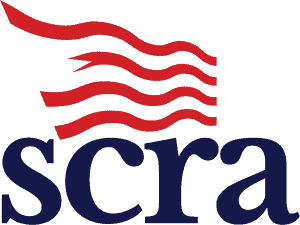Does SCRA Apply to Credit Cards After Joining the Military?

By now, you probably know that the Servicemembers Civil Relief Act (SCRA) grants eligible individuals financial and legal protections. Those who render active duty military service are given certain benefits during their active duty period so they can focus on serving the nation.
Among these SCRA benefits is an interest rate limit. However, timing plays a key role in this particular benefit. We’ll discuss whether the interest rate cap on credit cards is applicable after joining the Armed Forces.
Contents
- 1 Does the SCRA Cover Your Credit Card After Joining Military Service?
- 2 What the Servicemembers Civil Relief Act Says About Interest Rates
- 3 Are Joint Accounts Eligible for SCRA Protections?
- 4 How Active Duty Military Personnel Can Apply for SCRA Protections
- 5 How the Military Lending Act Can Help
- 6 Conclusion
- 7 FAQs
- 7.1 What’s the difference between the Servicemembers Civil Relief Act and the Military Lending Act?
- 7.2 Can I request an interest rate reduction for credit cards?
- 7.3 Does the SCRA apply to credit card debt?
- 7.4 Do military spouses get SCRA protections on credit card debt?
- 7.5 Do military personnel have to pay credit card debt?
Does the SCRA Cover Your Credit Card After Joining Military Service?
No, it should be highlighted that the SCRA interest rate limit only applies to pre-service debt. This means that you can only apply for an interest rate cap on debt incurred prior to joining the Armed Forces. One’s active duty start date is important information when applying for this particular SCRA benefit.
What the Servicemembers Civil Relief Act Says About Interest Rates
The SCRA helps active duty members, including Air Force and Marine Corps members, lower their pre-service debt to six percent. These reduced interest rates only apply to pre-service debt, which means that when a person starts active military service, it plays a key role in determining when this protection takes effect.
The service rate limit benefit applies to all active-duty military members from the Army, Coast Guard, Air Force, Marine Corps, and Navy. It is also available to reserve members called to active duty, Public Health Service commissioned officers, and National Guard members called to active duty.
The SCRA applies to various types of debt, including credit cards, student loans, mortgage loans, medical bills, car loans, and installment loans. Joint loans are eligible for SCRA protections if the eligible individual is among the owners and the loan was incurred prior to their active duty service.
Interest Rate Limits
Timing is key to SCRA benefits, including the interest rate limit. The interest rate cap applies exclusively to debt or loans signed before one entered active duty military service. This means that debt incurred after entering the military isn’t covered by the SCRA.
Moreover, service members need to apply for SCRA protections proactively. This protection isn’t automatic. While active duty servicemembers can apply for SCRA protections up to 180 days after leaving the Armed Forces, they still need to apply for the reductions actively.
Are Joint Accounts Eligible for SCRA Protections?
Yes, but only if the account was opened before the service member entered active duty service. As long as the protected individual is a co-signer to that loan or credit card, it’s covered by the federal law.
How Active Duty Military Personnel Can Apply for SCRA Protections
Active duty service members should be aware that SCRA benefits, like the interest rate limit, aren’t automatic. You must be proactive in requesting SCRA protections. For interest-rate limits, you need to be mindful of the following:
- Proof that the debt was incurred before entering active duty: It’s essential to show evidence of when that person started active duty service. Simultaneously, that person should prove that the debt was taken up before their active duty started. For example, credit card statements should be presented for credit card debt.
- Request SCRA protection within 180 days after one’s active duty service period ends: An active duty service member can request an interest rate reduction while on active duty or within 180 days after they leave.
- Show active duty service proof: The covered individual can show a copy of their active duty orders or a letter from that individual’s commanding officer with the service branch letterhead. The letter should specify when the service member started active duty service. Alternatively, they can get proof from a third-party service like SCRACVS. SCRACVS can help individuals verify their military status, including when they entered active duty.
How the Military Lending Act Can Help
As mentioned, the SCRA only applies to credit card debt incurred before entering active-duty service. However, there’s another law that protects service members from overwhelming debt. The Military Lending Act (MLA) limits interest and fees to 36%. This is also known as the military annual percentage rate.
The MLA helps service members control their overall debt once they sign up for the military. The MLA applies to service members, their spouses, and dependents.
It applies to credit card debt, vehicle title loans, tax refund anticipation loans, certain payday loans, unsecured, open-end lines of credit, and deposit and advance loans.
It also covers debt cancellation contract fees, credit insurance premiums, and fees associated with extra products. However, it should be noted that the MLA doesn’t cover resident mortgages, motor vehicle loans when the credit is secured by the vehicle being bought, and personal property loans.
Conclusion
The SCRA can make a massive impact on service members, so they should verify if they have eligible member accounts. Whether a person is requesting SCRA or MLA protections, verifying their military status is key. SCRACVS can help service members acquire proof of active duty work. Click here to sign up at SCRACVS and verify the active duty status.
FAQs
What’s the difference between the Servicemembers Civil Relief Act and the Military Lending Act?
The SCRA covers debt or loans incurred before active duty service, while the MLA covers debt incurred upon active duty service. The SCRA lowers one’s interest rate to 6%, while the MLA lowers it to 36% Military Annual Percentage Rate (MAPR).
Can I request an interest rate reduction for credit cards?
Yes, The SCRA allows you to have your interest rate on credit card debt capped at 6%. This reduction applies exclusively to debt you acquired entering active duty. For debt incurred after entering active duty, you can apply for MLA protections, which lowers your interest rate to 36% Military Annual Percentage Rate (MAPR).
Does the SCRA apply to credit card debt?
Yes, The SCRA applies to credit card debts incurred before one entered active duty service. You can’t use SCRA protections for debt incurred after entering active duty.
Do military spouses get SCRA protections on credit card debt?
Yes, as long as the credit card is also under the service member’s name. Likewise, the SCRA protection is limited to debt incurred before the service member entered active duty.
Do military personnel have to pay credit card debt?
Yes. Like civilians, military personnel have to pay their credit card debt. However, they are granted protections under the SCRA and MLA. The SCRA lowers the pre-service debt interest rate to 6% while the MLA reduces the interest rate on debt to 36% Military Annual Percentage Rate (MAPR).



